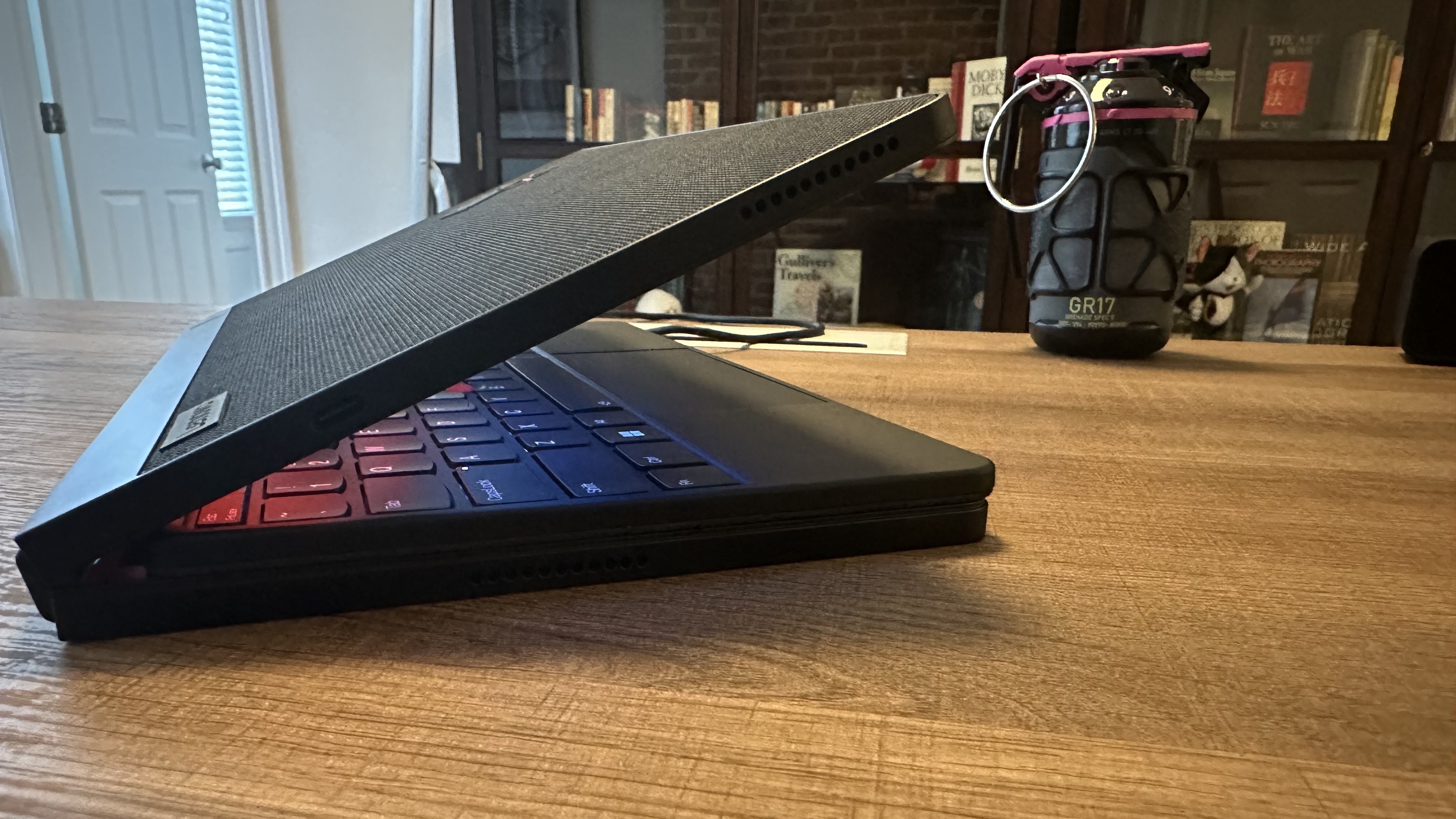I never understood who would want a foldable laptop, until I had to review one
Lab gremlin learns to stop worrying and love the foldable laptop

I’ve tested many foldable devices in my time as one of Laptop Mag’s lab gremlins, and that has left me with a general dislike of the format. Reviewing Lenovo’s ThinkPad X1 Fold 16 Gen 1, I went in expecting to be disappointed. I’ve never had the joyful experience of my colleagues when dealing with a foldable phone, tablet, or laptop. I just couldn’t see how the format would be anything but annoying.
It’s fair to say that the ThinkPad X1 Fold 16 had its work cut out for it if it was going to impress me. Going into it, I had a feeling that I wouldn’t hate the X1 Fold as much as I’d hated most foldables that came into the testing labs. But I wasn’t expecting just how much more I enjoyed the X1 Fold’s capabilities while using it to handle some of my day-to-day work.
The hybrid curse
Like many hybrid solutions, foldable laptops fail to do anything perfectly because they’re too concerned with doing everything. Personally, I’ve always preferred to have a laptop, a tablet, and a desktop rather than one device that can be all three. It’d be one thing if foldable laptops were cheap enough to make a good case for replacing your other devices. But they all come with premium price tags, so you’re better off getting multiple mid-range machines than pouring out the money for an expensive four-in-one machine with old hardware.
I tend to dislike hybrid solutions in general. Sure, hybrid vehicles are far better for the environment in terms of fuel emissions and also have fewer lithium-ion batteries that can’t be recycled. But I have prepared rants for my Scuba students about the perils of “all-in-one BCDs” and I find most multi-purpose kitchen implements are too gimmicky to be useful.
Despite that, I had a ThinkPad review to work on. No matter my dislike for foldables, I tried to do my absolute best to start the review process with as much of an open mind as possible. So, I set aside all memories of interminable battery test runs or fighting to get “Sid Meier’s Civilization VI: Gathering Storm” to run at a reasonable resolution and actually used the ThinkPad X1 Fold as a proper laptop and desktop.
Unimpressive hardware, but the flexibility is nice

As every foldable laptop we’ve gotten our hands on so far has featured an outdated processor and integrated graphics, I wasn’t quite sure what the purpose of any of them was. And I’m still not sure there’s a niche here for foldables to fill.
However, while using the X1 Fold 16, I did find that I enjoyed being able to swap from laptop to desktop mode without having to switch machines. Sure, I generally work in Gsuite apps, so transferring my work between multiple devices is easy enough, but it does involve a boot process or physically moving to a different location in the case of my desktop. With the X1 Fold, I could just flip from Laptop to Desktop mode without getting off the couch. Which has its own problems to be sure, but that flexibility in work setup is something that I could understand wanting or enjoying.
Sign up to receive The Snapshot, a free special dispatch from Laptop Mag, in your inbox.
It’s not the laptop, it’s me

While I’ve always been aware that hardware benchmarking is an entirely synthetic process, I’ve always found ways to make the benchmarks reasonable in estimation of a laptop’s performance for general users. That’s kind of my whole job as a Staff Writer these days.
While all benchmarks are inherently unrealistic, foldables may be the one product category where testing them is so heavily divorced from their actual use case that it doesn’t translate at all. Sure, we still need the test results, but you aren’t going to get a foldable laptop because you want the best possible performance.
You get a foldable laptop because you want the flexibility to change your workstation setup without changing devices. You get a foldable phone because you want the ability to switch to a larger screen for viewing images or video. And, when trying to write up a review or slap together a quick Photoshop render for a news piece, having the ability to flip from Laptop into Desktop mode is actually kind of fantastic.
“Early adopters” only

I won’t become the next foldable evangelist, but I can admit that my issue with foldables has been a case of “It’s not the laptop, it’s me” this whole time. However, at this point, the drawbacks of a foldable will keep me from being an early adopter. These are definitely devices for people who want to feel like they’re at the cutting edge of technology, while maybe not actually having the latest hardware.
If you’re not tuned into the minute changes in chipset technology, having a 12th Gen Intel CPU is hardly going to bother you. Especially because there’s nothing on the outside of the X1 Fold 16 (or the Zenbook 17 Fold or HP Specter Fold) that would make you think it's got older hardware inside it. After all, the display folds and that is clearly new technology in the laptop world. The flexibility afforded by that foldable display, and the status of having new and relatively untested technology matters far more to the early adopter audience.
That said, if we ever get a foldable with newer hardware and the option for a discrete GPU, I may just find myself at the front of the line.

A former lab gremlin for Tom's Guide, Laptop Mag, Tom's Hardware, and TechRadar; Madeline has escaped the labs to join Laptop Mag as a Staff Writer. With over a decade of experience writing about tech and gaming, she may actually know a thing or two. Sometimes. When she isn't writing about the latest laptops and AI software, Madeline likes to throw herself into the ocean as a PADI scuba diving instructor and underwater photography enthusiast.
